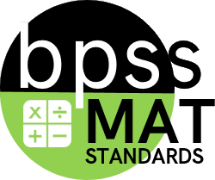MAT-00.AR.OA.01
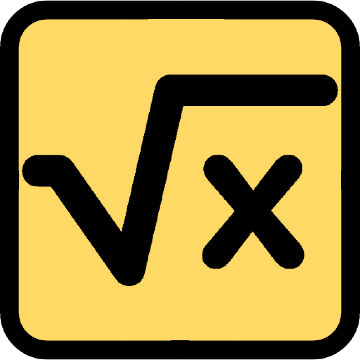
|
Kindergarten (MAT) Targeted Standard
(AR) Algebraic Reasoning
(OA) Operations and Algebraic Thinking
Learners will analyze patterns and relationships to generate and interpret numerical expressions.
|
MAT-00.AR.OA.01 Automatically add and subtract within 5.
 Proficiency Scale Proficiency Scale
Progressions
Operations – Basic Facts
-
MAT-00.AR.OA.01 Automatically add and subtract within 5.
- MAT-01.AR.OA.01 Automatically add and subtract within 10.
- MAT-02.AR.OA.01 Automatically add and subtract within 20.
- MAT-03.AR.OA.01 Using mental strategies, multiply and divide basic facts within 100. Automatically multiply and divide up to 5 x 5 and 10s facts.
- MAT-04.AR.OA.01 Automatically multiply and divide through 10 x 10.
- MAT-05.AR.OA.01 Automatically multiply and divide through 12 x 12.
|
|
MAT-00.AR.OA.04

|
Kindergarten (MAT) Targeted Standard
(AR) Algebraic Reasoning
(OA) Operations and Algebraic Thinking
Learners will analyze patterns and relationships to generate and interpret numerical expressions.
|
MAT-00.AR.OA.04 Solve authentic word problems with addition by putting together or adding to within 10.*
 Proficiency Scale Proficiency Scale
Progressions
Solve Problems Using Operations
-
MAT-00.AR.OA.04 Solve authentic word problems with addition by putting together or adding to within 10.
- MAT-01.AR.OA.06 Use the +, -, and = symbols accurately in an equation.
- MAT-01.AR.OA.04 Solve authentic word problems with addition, including three numbers and unknowns, within 20.
- MAT-02.AR.OA.03 Solve one- and two-step authentic word problems with addition within 100, including the use of unknowns.
- MAT-00.AR.OA.05 Solve authentic word problems with subtraction by taking apart or taking from within 10.
- MAT-01.AR.OA.05 Solve authentic word problems with subtraction, including unknowns, within 20.
- MAT-02.AR.OA.04 Solve one- and two-step authentic word problems with subtraction within 100, including the use of unknowns.
- MAT-02.AR.OA.05 Use repeated addition to find the total number of objects arranged in a rectangular array.
- MAT-03.AR.OA.03 Solve two-step authentic word problems using addition and subtraction within 1000, including equations with a letter as an unknown.
- MAT-03.AR.OA.04 Use strategies and visual models to solve authentic word problems with multiplication within 100, including unknowns, using grouping models and equations.
- MAT-03.AR.OA.05 Use strategies and visual models to solve authentic word problems with division within 100, including unknowns, using grouping models and equations.
- MAT-04.AR.OA.03 Solve multi-step authentic word problems using the four operations, including problems with interpreted remainders. Represent problems using equations, including a symbol as an unknown.
|
|
MAT-00.AR.OA.05

|
Kindergarten (MAT) Targeted Standard
(AR) Algebraic Reasoning
(OA) Operations and Algebraic Thinking
Learners will analyze patterns and relationships to generate and interpret numerical expressions.
|
MAT-00.AR.OA.05 Solve authentic word problems with subtraction by taking apart or taking from within 10.*
 Proficiency Scale Proficiency Scale
Progressions
Solve Problems Using Operations
-
MAT-00.AR.OA.04 Solve authentic word problems with addition by putting together or adding to within 10.
- MAT-01.AR.OA.06 Use the +, -, and = symbols accurately in an equation.
- MAT-01.AR.OA.04 Solve authentic word problems with addition, including three numbers and unknowns, within 20.
- MAT-02.AR.OA.03 Solve one- and two-step authentic word problems with addition within 100, including the use of unknowns.
- MAT-00.AR.OA.05 Solve authentic word problems with subtraction by taking apart or taking from within 10.
- MAT-01.AR.OA.05 Solve authentic word problems with subtraction, including unknowns, within 20.
- MAT-02.AR.OA.04 Solve one- and two-step authentic word problems with subtraction within 100, including the use of unknowns.
- MAT-02.AR.OA.05 Use repeated addition to find the total number of objects arranged in a rectangular array.
- MAT-03.AR.OA.03 Solve two-step authentic word problems using addition and subtraction within 1000, including equations with a letter as an unknown.
- MAT-03.AR.OA.04 Use strategies and visual models to solve authentic word problems with multiplication within 100, including unknowns, using grouping models and equations.
- MAT-03.AR.OA.05 Use strategies and visual models to solve authentic word problems with division within 100, including unknowns, using grouping models and equations.
- MAT-04.AR.OA.03 Solve multi-step authentic word problems using the four operations, including problems with interpreted remainders. Represent problems using equations, including a symbol as an unknown.
|
|
MAT-00.AR.OA.06

|
Kindergarten (MAT) Targeted Standard
(AR) Algebraic Reasoning
(OA) Operations and Algebraic Thinking
Learners will analyze patterns and relationships to generate and interpret numerical expressions.
|
MAT-00.AR.OA.06 Recognize, duplicate, complete, and extend repeating patterns in a variety of contexts.* (e.g., shape, color, size, objects, sounds, and movement)
 Proficiency Scale Proficiency Scale
Progressions
Patterns
-
MAT-00.AR.OA.06 Recognize, duplicate, complete, and extend repeating patterns in a variety of contexts (e.g., shape, color, size, objects, sounds, and movement).
- MAT-01.AR.OA.07 Identify, create, complete, and extend patterns that are repeating, increasing, and decreasing in a variety of contexts.
- MAT-02.AR.OA.06 Identify a group of objects from 0 to 20 as even or odd by showing even numbers as a sum of two equal parts.
- MAT-03.AR.OA.06 Identify arithmetic patterns and explain them using the properties of operations.
- MAT-04.AR.OA.06 Generate a number or shape pattern that follows a given rule while identifying apparent features of the pattern that were not explicit in the rule itself.
- MAT-05.AR.OA.05 Generate two numerical patterns using two given rules and form ordered pairs consisting of corresponding terms from the two patterns. (Graphing on a coordinate plane).
- MAT-09.AR.01 Use the structure of an expression (i.e., quadratic and exponential) to identify ways to rewrite it.
- MAT-12.AR.02 Use the structure of an expression (to extend to polynomial and rational expressions) to identify ways to rewrite it.
|
|
MAT-00.DPS.D.01
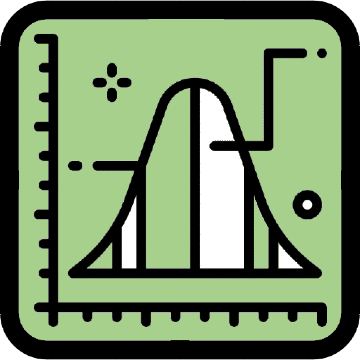
|
Kindergarten (MAT) Targeted Standard
(DPS) Data Probability and Statistics
(D) Data
Learners will represent and interpret data.
|
MAT-00.DPS.D.01 Sort and classify objects (up to 10) based on attributes and explain the reasoning used.*
 Proficiency Scale Proficiency Scale
Progressions
Data Collection
- MAT-00.DPS.D.01 Sort and classify objects (up to 10) based on attributes and explain the reasoning used.
- MAT-01.DPS.D.01 Collect, organize and represent data with up to three categories using picture and bar graphs.
- MAT-02.DPS.D.01 Formulate questions and collect, organize, and represent data, with up to four categories using single unit scaled pictures and bar graphs.
- MAT-03.DPS.D.01 Formulate questions to collect, organize, and represent data with more than four categories using scaled pictures and bar graphs.
- MAT-04.DPS.D.01 Formulate questions to collect, organize, and represent data to reason with math and across disciplines.
- MAT-06.DPS.DA.01 Write a statistical question that can be answered using measures of center or variability of a data set.
- MAT-07.DPS.DA.01 Identify the strengths and weaknesses of a population sample, including possible bias in the process of the data collection.
- MAT-12.DPS.06 Use data from a sample survey to estimate a population means or proportion; develop a margin of error through the use of simulation models for random sampling.
- MAT-12.DPS.09 Recognize the purposes of and differences among sample surveys, experiments, and observational studies; explain how randomization relates to each.
|
|
MAT-00.GM.G.01
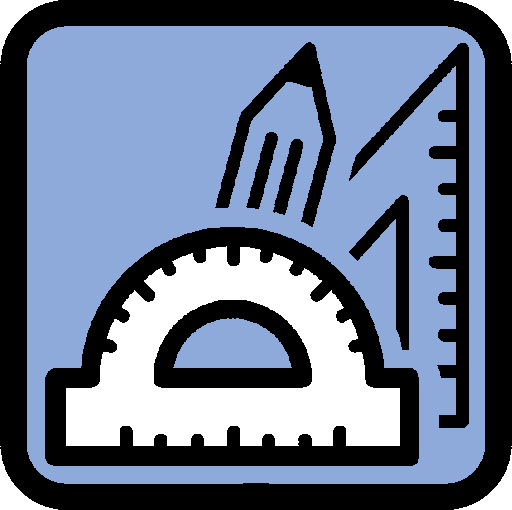
|
Kindergarten (MAT) Targeted Standard
(GM) Geometry and Measurement
(G) Geometry
Learners will compose and classify figures and shapes based on attributes and properties; represent and solve problems using a coordinate plane.
|
MAT-00.GM.G.01 Name shapes and identify them as two-dimensional regardless of their orientations or overall sizes.*
 Proficiency Scale Proficiency Scale
Progressions
Two-Dimensional Shapes
- MAT-00.GM.G.01 Name shapes and identify them as two-dimensional (squares, circles, triangles, rectangles)regardless of their orientations or overall size.
- MAT-00.GM.G.03 Compare and classify two-dimensional shapes to describe their similarities, differences, and attributes (squares, circles, triangles, rectangles).
- MAT-01.GM.G.01 Name shapes and identify them as two-dimensional (trapezoids, rhombuses, pentagons, hexagons, octagons).
- MAT-01.GM.G.03 Determine geometric attributes of two-dimensional and three-dimensional shapes.
- MAT-02.GM.G.01 Identify two-dimensional shapes (parallelograms and quadrilaterals).
- MAT-02.GM.G.03 Compose geometric shapes having specified geometric attributes, such as a given number of edges, angles, faces, vertices, and/or sides.
- MAT-03.GM.G.01 In two-dimensional shapes, identify lines, angles (right, acute, obtuse), and perpendicular and parallel lines.
- MAT-03.GM.G.02 Sort quadrilaterals into categories based on attributes.
- MAT-04.GM.G.01 Identify, label, and draw points, lines, line segments, rays, and angles (right, acute, obtuse).
- MAT-04.GM.G.02 Classify two-dimensional figures based on the presence or absence of parallel or perpendicular lines or the presence or absence of angles of specified size.
- MAT-05.GM.G.01 Classify two-dimensional figures in a hierarchy based on properties.
- MAT-10.GM.01 Know precise definitions of angle, circle, perpendicular line, parallel line, and line segment based on the undefined notions of point, line, and plane.
- MAT-10.GM.09 Prove and apply theorems about lines and angles.
MAT-10.GM.10 Prove and apply theorems about triangles.
- MAT-10.GM.11 Prove and apply theorems about parallelograms.
- MAT-10.GM.34 Identify the shapes of two-dimensional cross-sections of three-dimensional objects and identify three-dimensional objects generated by rotations of two-dimensional objects.
|
|
MAT-00.NO.CC.01
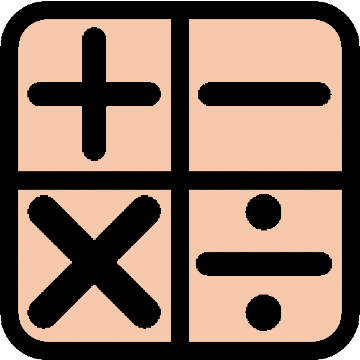
|
Kindergarten (MAT) Targeted Standard
(NO) Number and Operations
(CC) Counting and Cardinality
Learners will understand the relationship between numerical symbols, names, quantities, and counting sequences.
|
MAT-00.NO.CC.01 Count verbally in sequential order by ones and tens to 100, making accurate decuple transitions (ex.89 to 90).
Count verbally forward from any given number within 100.*
 Proficiency Scale Proficiency Scale
Progressions
Counting Forward
-
MAT-00.NO.CC.01 Count verbally in sequential order by ones and tens to 100, making accurate decuple transitions (ex.89 to 90).
Count verbally forward from any given number within 100.
- MAT-01.NO.CC.01 Count forward by ones and tens from any given point
within 120.
- MAT-02.NO.CC.01 Count forward from any given number within 1000.
|
|
MAT-00.NO.CC.02

|
Kindergarten (MAT) Targeted Standard
(NO) Number and Operations
(CC) Counting and Cardinality
Learners will understand the relationship between numerical symbols, names, quantities, and counting sequences.
|
MAT-00.NO.CC.02 Count backward from 20 by ones and from a given number within 10.*
 Proficiency Scale Proficiency Scale
Progressions
Counting Backward
-
MAT-00.NO.CC.02 Count backward from 20 by ones and from a given number within 10.
- MAT-01.NO.CC.02 Count backward by ones and tens from any given number within 120.
- MAT-02.NO.CC.02 Count backward from any given number within 1000.
|
|
MAT-00.NO.CC.03

|
Kindergarten (MAT) Targeted Standard
(NO) Number and Operations
(CC) Counting and Cardinality
Learners will understand the relationship between numerical symbols, names, quantities, and counting sequences.
|
MAT-00.NO.CC.03 Identify and write any given numeral within 20.*
 Proficiency Scale Proficiency Scale
Progressions
Number Identification and Writing
-
MAT-00.NO.CC.03 Identify and write any given numeral within 20.
- MAT-01.NO.CC.03 Represent several objects with a written numeral up to 120.
- MAT-02.NO.CC.03 Read and write numbers up to 1,000 using standard, word, and expanded forms.
- MAT-03.NO.CC.01 Read and write numbers up to 10,000 using objects or visual representations including standard and expanded forms.
- MAT-04.NO.CC.01 Read numbers to the millions place including word, standard and expanded form. Write numbers to the millions place including standard and expanded form.
- MAT-05.NO.CC.01 Read, write, and compare decimals to the thousandths including standard and expanded forms.
|
|
MAT-00.NO.CC.04

|
Kindergarten (MAT) Targeted Standard
(NO) Number and Operations
(CC) Counting and Cardinality
Learners will understand the relationship between numerical symbols, names, quantities, and counting sequences.
|
MAT-00.NO.CC.04 Recognize and verbally label arrangements, without counting, for briefly shown collections up to 10 (e.g., "I saw 5." How do you know?" "I saw 3 and 2, that is 5.").*
 Proficiency Scale Proficiency Scale
Progressions
Subitizing
-
MAT-00.NO.CC.04 Recognize and verbally label arrangements, without counting, for briefly shown collections up to 10 (e.g., "I saw 5." How do you know?" "I saw 3 and 2, that is 5.").
- MAT-01.NO.CC.04 Recognize and verbally label arrangements, without counting, for briefly shown collections up to 20 (e.g., "I saw 16." "How did you know?" "I saw 10 and 6, that is 16.").
|
|
MAT-00.NO.CC.05

|
Kindergarten (MAT) Targeted Standard
(NO) Number and Operations
(CC) Counting and Cardinality
Learners will understand the relationship between numerical symbols, names, quantities, and counting sequences.
|
MAT-00.NO.CC.05 Count and tell how many objects up to 20 are in an arranged pattern or up to 10 objects in a
scattered configuration. Represent a quantity of up to 20 with a numeral.*
 Proficiency Scale Proficiency Scale
Progressions
Counting Patterns
-
MAT-00.NO.CC.05 Count and tell how many objects up to 20 are in an arranged pattern or up to 10 objects in a scattered configuration. Represent a quantity of up to 20 with a numeral.
- MAT-01.NO.CC.05 Skip count forward and backward by 5s and 10s from multiples and recognize the patterns of up to 10 skip counts.
- MAT-02.NO.CC.04 Skip count forward and backward by 2s and 100s and recognize the patterns of skip counts.
- MAT-10.DPS.09 Determine the number of outcomes using permutations and combinations in context.
- MAT-12.DPS.11 Use permutations and combinations to compute probabilities of compound events and solve problems.
|
|
MAT-00.NO.NBT.01

|
Kindergarten (MAT) Targeted Standard
(NO) Number and Operations
(NBT) Number Based Ten
Learners will understand the place value structure of the base-ten number system and represent, compare, and perform operations with multi-digit whole numbers and decimals.
|
MAT-00.NO.NBT.01 Compare two numbers between 1 and 20 using words greater than, less than, or equal to.*
 Proficiency Scale Proficiency Scale
Progressions
Place Value
-
MAT-00.NO.NBT.01 Compose and decompose numbers from 11 to 19 using a group of ten ones and some more ones using a model, drawing, or equation.
- MAT-01.NO.NBT.01 Demonstrate that the two digits of a two-digit number represent a composition of some tens
and some ones.
- MAT-02.NO.NBT.01 Understand that the three digits of a three-digit number represent a composition of some hundreds, some tens, and some ones.
- MAT-04.NO.NBT.01 Understand that in a multi-digit whole number, a digit in one place represents
ten times what it represents in the place to its right.
- MAT-05.NO.NBT.01 Understand that in a multi-digit number, a digit in one place represents 10 times as much as it represents in the place to its right and 1/10 of what it represents in the place
to its left.
- MAT-08.NO.NS.03 Use scientific notation to represent very large or very small quantities. Interpret scientific notation generated by technology. Compare and order numbers in scientific and standard notation.
|
|
MAT-00.NO.NBT.02

|
Kindergarten (MAT) Targeted Standard
(NO) Number and Operations
(NBT) Number Based Ten
Learners will understand the place value structure of the base-ten number system and represent, compare, and perform operations with multi-digit whole numbers and decimals.
|
MAT-00.NO.NBT.02 Compare two numbers between 1 and 20 using words greater than, less than, or equal to.*
 Proficiency Scale Proficiency Scale
Progressions
Compare Numbers and/or Expressions
-
MAT-00.NO.NBT.02 Compare two numbers between 1 and 20 using words greater than, less than, or equal to.
- MAT-01.NO.NBT.02 Compare two two-digit numbers using symbols >, <, and =. Justify comparisons based on the number of tens and ones.
- MAT-02.NO.NBT.02 Compare two three-digit numbers using symbols >, <, and =. Justify comparisons based on the value of thousands, hundreds, tens, and ones.
- MAT-03.NO.NBT.01 Compare two four-digit numbers using symbols, >, <, and =. Justify comparisons based on the value of thousands, hundreds, tens, and ones.
- MAT-04.NO.NBT.02 Compare two numbers to the millions place and decimals to the hundredths place, using symbols >, <, and =. Justify comparisons based on the value of the digits.
- MAT-05.NO.NBT.02 Compare two decimals to thousandths using symbols >, <, and =. Justify comparisons based on the value of the digits.
- MAT-06.NO.NS.01 Explain and show the relationship between non-zero rational numbers and their opposites using horizontal and vertical number lines in authentic problems. Use rational numbers to represent quantities in authentic contexts and explain
the meaning of 0 in certain situations.
- MAT-06.NO.NS.02 Write, interpret, and explain statements of order for rational numbers on a number line and in authentic contexts.
- MAT-07.NO.NS.01 Describe the absolute value of a number as its distance from zero on a number line.
- MAT-08.NO.NS.01 Compare and classify real numbers within the real number system.
- MAT-08.NO.NS.02 Use rational approximations of irrational numbers to compare the size of irrational numbers, locate them on a number line diagram, and estimate the value of irrational expressions involving one operation.
- MAT-08.NO.NS.03 Use scientific notation to represent very large or very small quantities. Interpret scientific notation generated by technology. Compare and order numbers in scientific and standard notation.
- MAT-09.AR.06 Solve linear equations and inequalities (to include compound inequalities) in one variable.
- MAT-09.AR.08 Graph the solution set to a two-variable system of linear equations. Create and graph the solution set to a two-variable system of linear inequalities in context.
- MAT-09.AR.09 Solve absolute value equations and inequalities in one or two variables.
- MAT-12.AR.09 Represent constraints by equations or inequalities and by systems of equations and/or inequalities and interpret solutions as viable or non-viable options in a modeling context.
|
|

